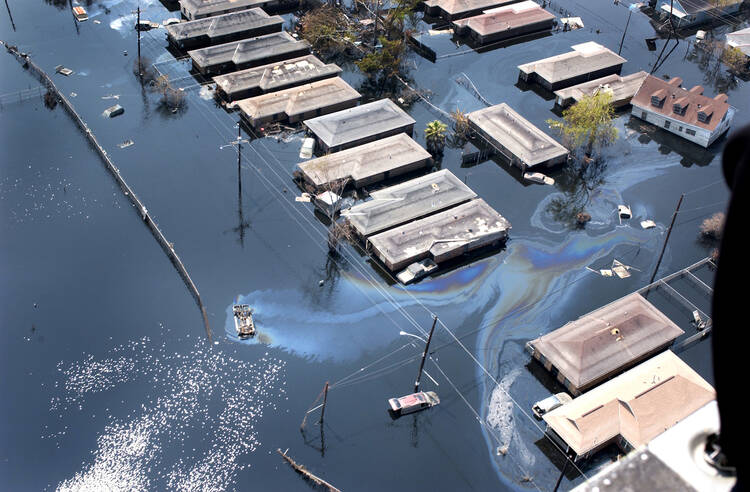On Aug. 29, 2005, Hurricane Katrina buried one of the world’s most iconic cities in a flood of biblical proportions. More than 1,800 people lost their lives. “It was like a war zone. No sign of life,” said the now-retired archbishop of New Orleans, Alfred C. Hughes. Across the region, 200,000 homes were destroyed or heavily damaged. Dozens of public, private and Catholic schools closed forever. But in the midst of the devastation, the Catholic Church jump-started the city’s initial recovery by opening up as many Catholic schools as quickly as possible. These schools accepted all students, including those who had attended public schools, and did not charge tuition. The current archbishop of New Orleans, Gregory M. Aymond, who came back to his hometown as archbishop in 2009, sees God’s blessings everywhere he looks: “He was walking in the floodwaters. He was in the attic. He was in the Superdome. [H]e didn’t abandon us.” Speaking on “America This Week” on Aug. 26, Mayor Mitch Landrieu of New Orleans said the city “is a great story of resurrection and redemption...of people coming together to help each other out.” He commends the “tremendous progress” the city has made, but adds that there is still “a long way to go.”
Ten Years After Katrina
Show Comments (
)
Comments are automatically closed two weeks after an article's initial publication. See our comments policy for more.
The latest from america
Pope Leo said that if the teen “had come all the way to Rome, then (the pope) could come all the way to the hospital to see him.”
A Reflection for Tuesday of the Eighteenth Week in Ordinary Time, by Molly Cahill
As emergency workers searched for survivors and tried to recuperate the bodies of the dead, Pope Leo XIV offered his prayers for people impacted by the latest shipwreck of a migrant boat off the coast of Yemen.
The Archdiocese of Miami celebrated the first Mass for detainees at “Alligator Alcatraz,” the Trump administration’s controversial immigrant detention center in the Florida Everglades.








